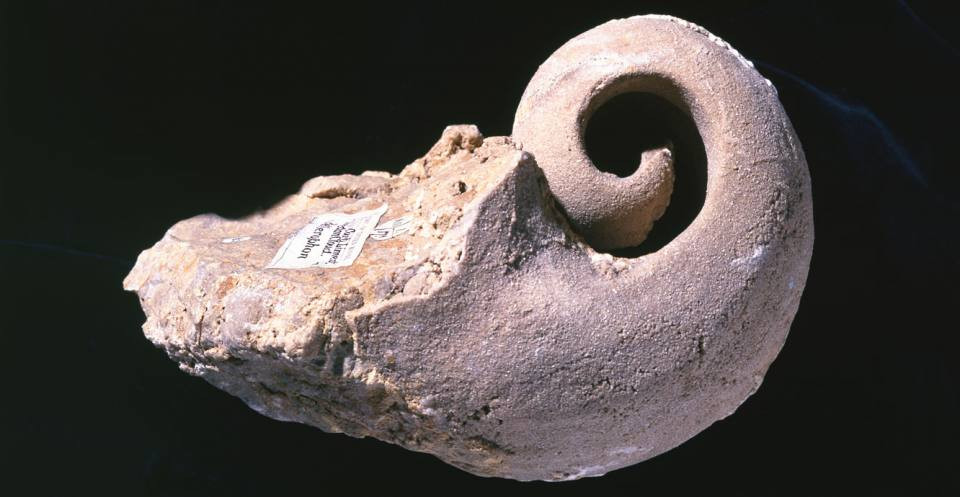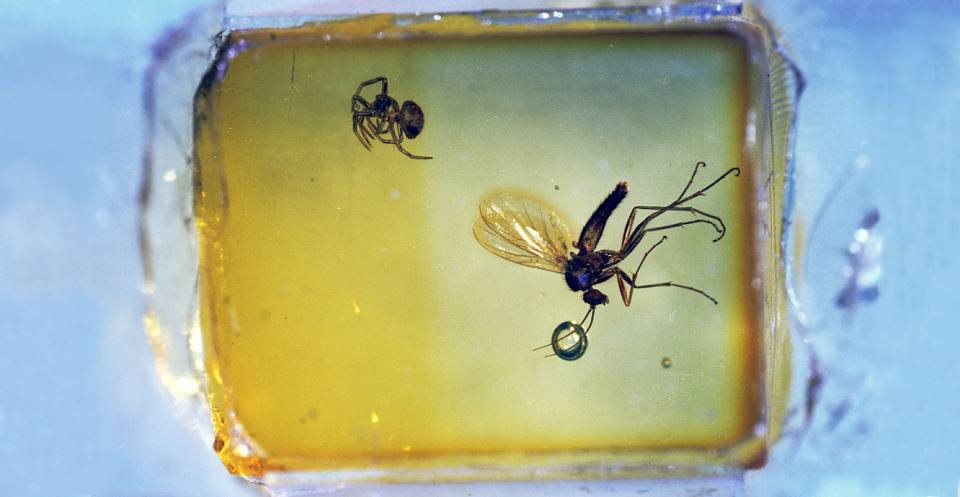Fossils, preserved remnants of ancient life, offer a captivating window into Earth’s history. These relics of plants and animals, entombed within sediments like sand and mud, tell tales of bygone eras, long-lost ecosystems, and the very evolution of life itself. Typically exceeding 10,000 years in age, fossils are not merely bones and shells; they encompass any trace of past existence, from microscopic pollen to colossal dinosaur skeletons. While soft tissues generally decompose, the durable parts – bones, shells, and teeth – often undergo mineralization, transforming into stone within the very rocks that encase them. In extraordinary circumstances, even delicate features like feathers, plant imprints, or footprints can be preserved, offering a more complete picture of life in deep time. From the minute foraminifera to impressive ammonites and trilobites, the diversity of fossils is as vast as the history they represent, all intricately linked to the rocks that safeguard these ancient secrets.
Quick Fact: The term “fossil” originates from the Latin word fossilis, meaning “dug up” or “unearthed,” aptly describing how these remnants are discovered within the Earth’s rocks.
Preserved remains of ancient organisms are categorized as either ‘body fossils’, representing actual body parts, or ‘trace fossils’, which are indirect evidence of life, such as footprints, burrows, and root systems. Both types are crucial for understanding past life, and both are inextricably linked to the rocks in which they are found.
Why the Study of Fossils in Rocks Matters
Fossils embedded within rocks are invaluable resources for unraveling the history of life on Earth. They are fundamental in tracing the origins of life and humanity, revealing the dynamic changes in our planet and its environments across vast geological timescales. Fossils vividly illustrate how continents, now separated by oceans, were once connected, piecing together Earth’s geographical evolution through the rock record.
Crucially, fossils provide compelling evidence for evolution and the remarkable adaptation of life forms to diverse environments. The fossil record meticulously documents the progression of species, forming a ‘tree of life’ that demonstrates the interconnectedness of all living organisms. By studying fossils in different rock layers, we gain insights into evolutionary lineages and the processes that have shaped biodiversity over millions of years.
Furthermore, fossils are essential tools for dating rocks. The principle of faunal succession, observing that different fossil types appear in rocks of different ages due to evolution, allows geologists to use fossils as time markers. These ‘index fossils’ are critical for stratigraphy, enabling the correlation of rock layers across different geographical locations. Ammonites, for instance, serve as excellent index fossils, helping to determine the relative ages of rock strata across continents.
Fossils empower us to reconstruct ancient worlds – envisioning landscapes populated by dinosaurs or giant dragonflies – bringing prehistoric ecosystems to life through the study of rocks that preserve these biological time capsules.
The Fossilization Process Within Sedimentary Rocks
Fossils are predominantly discovered within sedimentary rocks, and occasionally in fine-grained, low-grade metamorphic rocks. These rock types, formed from accumulated sediments, provide the ideal environment for fossil preservation. Sometimes, fossils dissolve away after formation, leaving behind cavities known as moulds in the surrounding rock. These moulds can later be filled with other minerals, creating casts that replicate the original fossil’s shape.
The key to fossilization is rapid burial by sediments, typically those suspended in water. This swift burial process is essential as it shields the remains from biological decay and physical disturbances that would otherwise destroy organic material. Sedimentary rocks, by their very nature of formation through sediment deposition, are thus the primary guardians of fossils.
Marine environments are particularly conducive to fossil preservation due to the high likelihood of rapid sediment burial. Conversely, environments like rocky mountaintops are less favorable, as carcasses decompose quickly due to exposure, and sediment deposition is minimal, limiting the chances of burial and fossilization within rocks.
There are four principal modes of fossil preservation within rocks:
Petrification: Turning to Stone within Rock
Petrification, specifically through permineralization, stands as the most prevalent method of fossilization. When a shell, bone, or tooth is buried within sediment, it becomes immersed in mineral-rich fluids circulating through the porous rock. These fluids deposit minerals such as calcium carbonate or silica within the pores of the buried remains. Gradually, these minerals completely replace the original organic material, transforming the remains into stone – a process aptly named petrification (from petra, the Latin word for rock or stone). This process effectively turns the once-living organism into a mineralized replica preserved within the rock matrix.
 This tree stump, found in East Fife, Scotland, is a good example of a petrified tree fossil produced by permineralisation.
This tree stump, found in East Fife, Scotland, is a good example of a petrified tree fossil produced by permineralisation.
Alt text: Petrified tree stump fossil in sedimentary rock, East Fife, Scotland, showcasing permineralization within rock.
This tree stump, unearthed in East Fife, Scotland, serves as a striking example of a petrified tree fossil, a product of permineralization, beautifully illustrating how organic matter is replaced by minerals within rock over time. BGS © UKRI.
Compression: Imprints in Rock under Pressure
Compression fossilization occurs when remains are subjected to immense pressure deep within sedimentary layers. The weight of overlying sediments, and potentially the pressure of seawater, compresses the fossil, resulting in a flattened, dark imprint within the rock. This process is particularly common for plant fossils, where the delicate structures are preserved as carbonaceous films on the rock surface.
 Plant leaves and ferns are good examples of fossils produced by compression. This image shows Coniopteris is a genus of true fern, or pteropsid, fossil from the Jurassic Period.
Plant leaves and ferns are good examples of fossils produced by compression. This image shows Coniopteris is a genus of true fern, or pteropsid, fossil from the Jurassic Period.
Alt text: Compression fossil of Coniopteris fern in shale rock, Jurassic period plant fossil, showcasing carbon imprint in rock.
Plant leaves and ferns are frequently fossilized through compression. The image shown is Coniopteris, a genus of true fern, or pteropsid, fossil dating back to the Jurassic Period, clearly demonstrating the compressed form within the rock. Learn more about fossil plants. BGS © UKRI.
Moulds and Casts: Fossil Shapes in Rock
When the original shell or bone completely dissolves away within the rock, it leaves a void in the shape of the original material – a mould. Subsequently, if sediments fill this void and solidify, they form a cast, a replica of the original fossil. Soft-bodied marine creatures like snails are often preserved as moulds and casts because their shells are prone to dissolution within the rock environment. A cast, therefore, is a positive impression formed from the mould, capturing the external shape of the ancient organism in rock. Discover more about gastropods.
 This image is a mould of an ancient snail or slug called Bellerophon, a gastropod. Fossils can form when mould of the interior of the shell is made by water-borne minerals percolating through it, but later the shell material dissolves away.
This image is a mould of an ancient snail or slug called Bellerophon, a gastropod. Fossils can form when mould of the interior of the shell is made by water-borne minerals percolating through it, but later the shell material dissolves away.
Alt text: Mould fossil of Bellerophon gastropod in rock, ancient snail fossil showing negative imprint in stone.
This image displays a mould of Bellerophon, an ancient snail or slug and a type of gastropod. Moulds form when water-borne minerals create an impression around the shell, and then the shell itself dissolves away, leaving its shape imprinted in the rock. BGS © UKRI.
Preserved Remains: Exceptional Preservation in Rock and Amber
The rarest form of fossilization is the preservation of original skeletons and soft body parts. While less common in typical rock formations, exceptional preservation can occur in specific conditions. Insects trapped and perfectly preserved in amber, fossilized tree resin, are prime examples of preserved remains. Amber, though not a rock itself, often becomes incorporated into sedimentary rock layers over time, safeguarding these delicate fossils within a rocky context.
 A fly and spider trapped in amber. Many different animals have been fossilised in amber, from flies and mosquitoes to spiders and snails, and in very rare instances ostracods (
A fly and spider trapped in amber. Many different animals have been fossilised in amber, from flies and mosquitoes to spiders and snails, and in very rare instances ostracods (
Alt text: Fly and spider preserved in amber within rock matrix, exceptional fossil preservation of insects in fossilized resin.
Pictured are a fly and spider entombed in amber. Amber has fossilized a diverse array of creatures, from flies and mosquitoes to spiders and snails, and even, in extremely rare cases, ostracods, showcasing an extraordinary form of preservation, sometimes found within rock formations. BGS © UKRI.